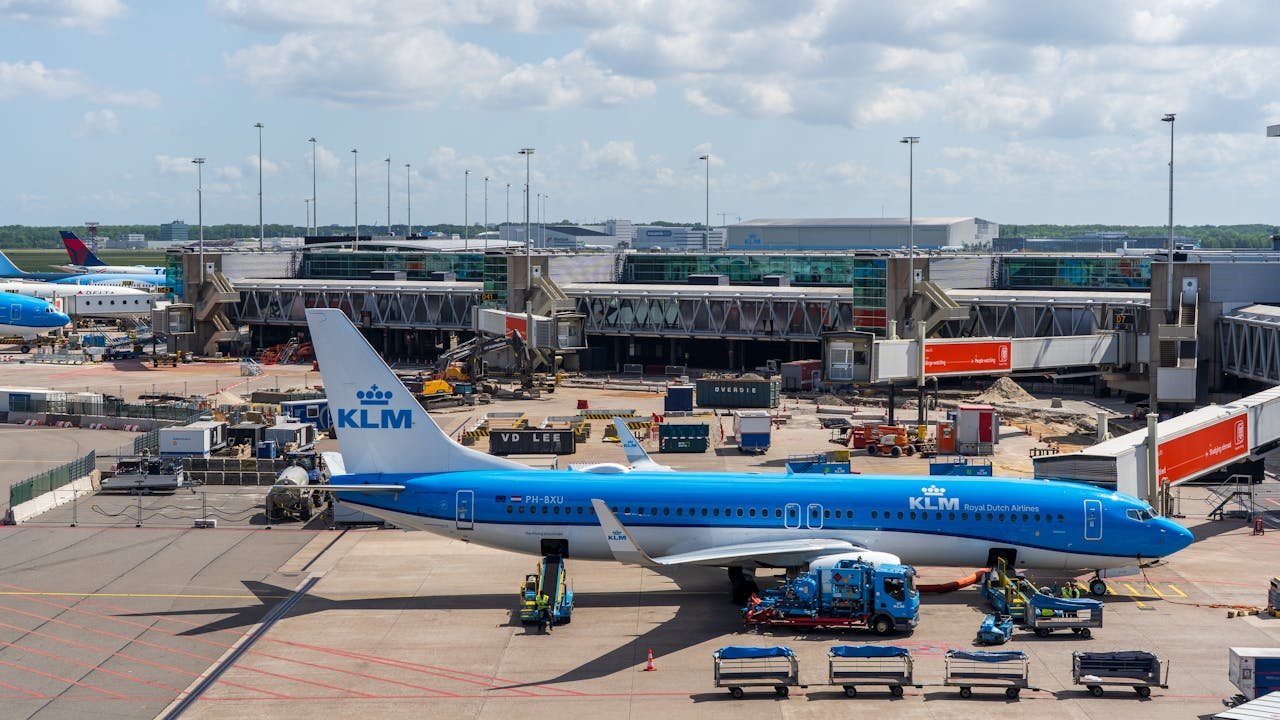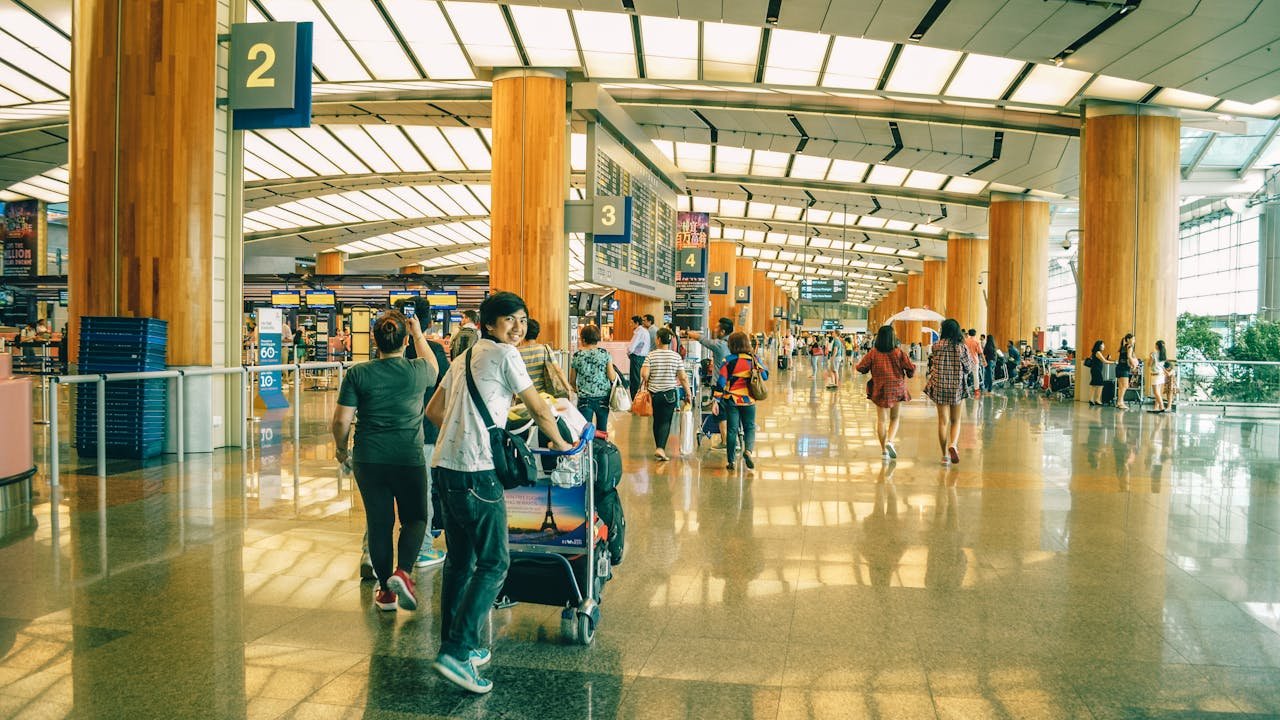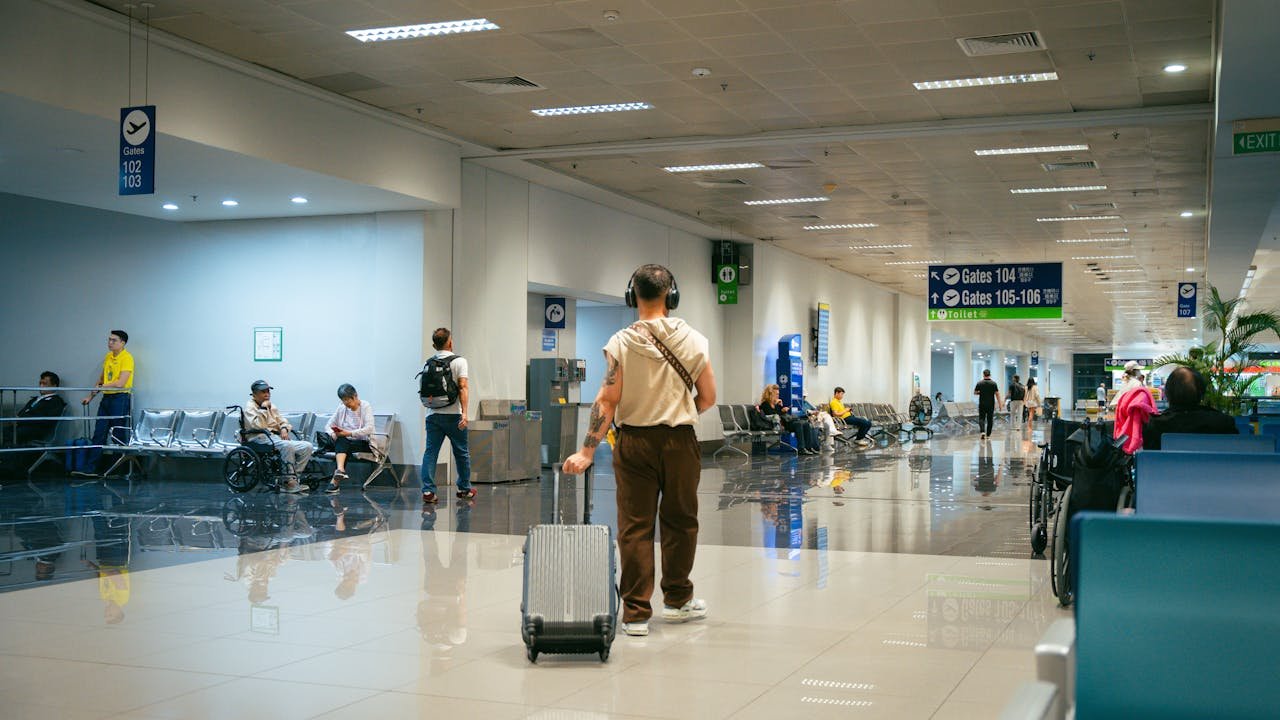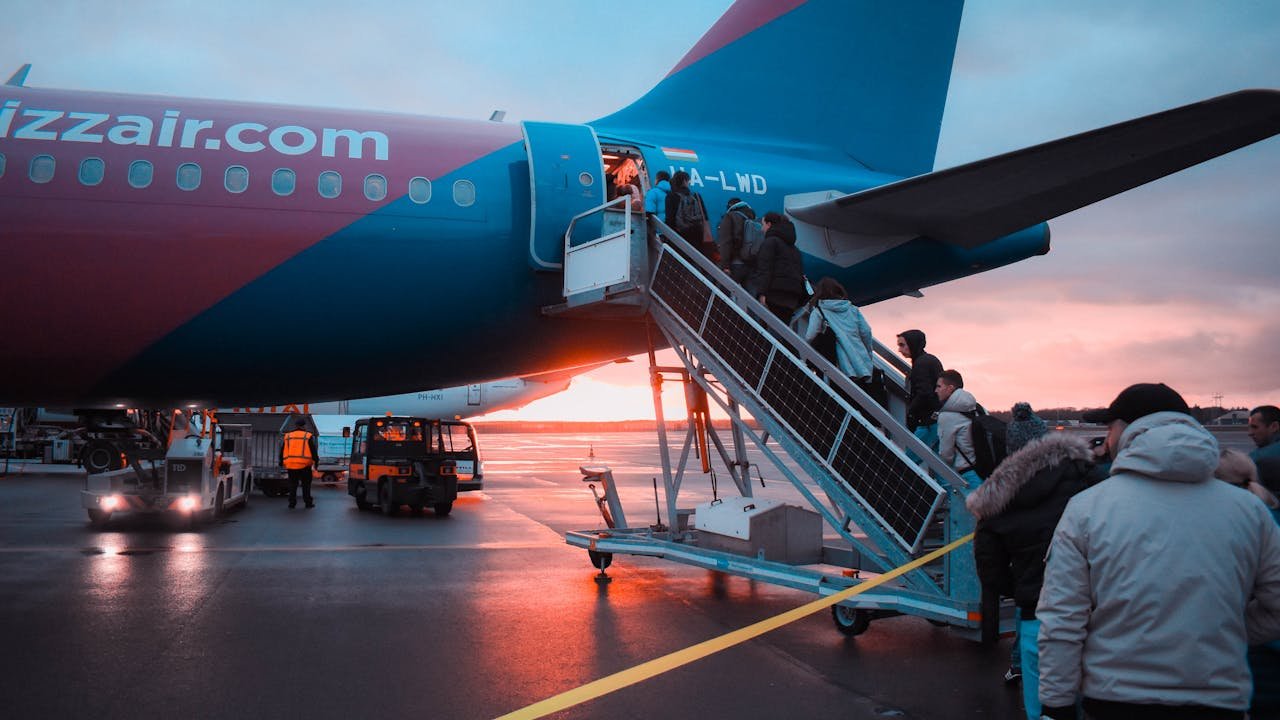Best Day to Book Flights for Cheaper Airfare
 Booking flights can feel like a guessing game, but knowing the best day to book flights can make all the difference in what you pay. In this guide, we’ll break down data-backed insights, airline trends, and practical tips to help you find the cheapest days to book and fly.
Booking flights can feel like a guessing game, but knowing the best day to book flights can make all the difference in what you pay. In this guide, we’ll break down data-backed insights, airline trends, and practical tips to help you find the cheapest days to book and fly.
Whether you’re planning a dream vacation or just trying to save on a quick getaway, understanding flight booking strategies is your first step toward smarter travel.
Is There a Best Day to Book Flights?
The belief that Tuesdays are the cheapest days to book flights has been around for years. However, recent data suggests that this isn’t always the case. According to recent research, booking flights on Sundays can lead to savings of up to 17% on international flights and 6% on domestic flights compared to booking on Fridays. This trend is attributed to airlines releasing deals over the weekend when there’s less corporate booking activity.
However, it’s essential to note that flight prices are dynamic and influenced by various factors, including demand, seasonality, and competition. Therefore, while Sundays may offer better deals on average, it’s crucial to remain flexible and vigilant when searching for flights.
When to Book: Timing Your Purchase

Beyond the day of the week, the timing of your booking plays a significant role in securing the best fares. For domestic flights, booking 1 to 3 months in advance is generally recommended. For international flights, aim for 2 to 8 months ahead of your departure date. Booking too early or too late can result in higher prices, so finding that sweet spot is key.
Additionally, consider the time of day when booking. Some experts suggest that early morning bookings, particularly on Sundays, may yield better deals. This strategy leverages the timing of airlines updating their inventory and releasing discounted fares.
Best Days to Fly: Departing on a Budget
While the booking day is important, the day you choose to fly can significantly impact your airfare.
- Data indicates that Tuesdays, Wednesdays, and Saturdays are typically the cheapest days to fly both domestically and internationally. These days, there is often lower demand, leading to reduced prices.
- Conversely, Fridays and Sundays are usually the most expensive days to fly due to higher demand from both business and leisure travelers.
If your schedule allows, opting for mid-week flights can result in substantial savings.
Best Day to Fly vs. Best Day to Book Flights

These aren’t the same thing. While Sunday may be the best day to book flights, the cheapest days to fly are usually:
- Tuesdays
- Wednesdays
- Saturdays
These mid-week and weekend slots tend to be quieter, which means lower demand and better prices.
By contrast, Fridays and Sundays are among the most expensive days to fly due to high demand from both leisure and business travelers.
Seasonality and Flight Prices: What to Watch
Pricing also depends heavily on the time of year. Expect higher prices during:
- Summer (June to August)
- Winter holidays (late November to early January)
- Spring break (March to early April)
Want the best deals? Book flights for shoulder seasons—late January to early March, or late August to mid-October. You’ll not only find cheaper fares but fewer crowds.
Other Factors That Affect Flight Prices

Even if you’ve nailed the best day to book flights, other variables can still swing the price significantly. Understanding these factors puts you in a better position to make informed, cost-saving decisions.
1. Demand and Seasonality
Airfare follows the same logic as any market: high demand drives up prices. Peak travel seasons like summer (especially July and August), year-end holidays, and spring break can send prices soaring.
Demand also spikes around major public holidays, events, or festivals in specific regions. For instance, flights to Rio de Janeiro can cost double during Carnival.
Airlines know when most people want to fly—and they price accordingly. Conversely, flying in the shoulder seasons (like early spring or late fall) often means lower fares and fewer crowds.
Pro Tip: Use Google Flights’ price graph to see how fares fluctuate by date. You’ll often find cheaper rates just before or after peak periods.
2. Route Popularity
Some routes—especially those between major international hubs—are serviced by multiple airlines. This competition often leads to better prices. For example, New York to London has dozens of daily flights, which creates price pressure.
However, less-traveled routes (like smaller cities or remote islands) may have limited options. Fewer flights mean less competition and often higher prices.
Pro Tip: If you’re flying to a less common destination, consider breaking your trip into segments. Fly into a major hub, then book a budget airline for the final leg.
3. Nearby Airports and Secondary Hubs
Flying into or out of smaller, secondary airports can result in substantial savings. For example, if you’re planning to visit Los Angeles, you might find better deals flying into Long Beach (LGB) or Burbank (BUR) instead of LAX.
Similarly, in Europe, low-cost carriers often operate out of smaller airports. London Stansted (STN) typically has lower fares than Heathrow (LHR), particularly with budget airlines like Ryanair or easyJet.
Pro Tip: Use the flight search tools’ “Search nearby airports” feature to compare fares within a 50–100 mile radius of your origin or destination.
4. Fuel Prices
Jet fuel is one of the largest operating costs for airlines. When global oil prices rise, airlines often pass these increases on to consumers in the form of fuel surcharges or higher base fares.
Although airlines hedge fuel costs in advance, prolonged increases in oil prices, like during geopolitical tensions or global supply shortages, can inflate ticket prices across the board.
Pro Tip: While you can’t control fuel prices, you can avoid traveling during global economic shocks. Booking well in advance during stable fuel pricing cycles can shield you from sudden price hikes.
5. Airline Pricing Algorithms
Airlines use sophisticated dynamic pricing algorithms. These algorithms adjust fares based on search activity, time of day, booking patterns, and more. Prices can spike in hours if a route suddenly sees more interest (from news events, viral travel videos, etc.).
Also, prices often vary depending on your device or location. Some users report cheaper fares when searching from a different region or clearing cookies.
Pro Tip: If you’re booking international travel, try searching from a VPN location or in a different currency. Sometimes, fares vary depending on where you appear to be searching from.
Tips to Score the Best Deals on Flights

Once you know the best day to book flights and understand the price-influencing factors, you can take action with these tried-and-true booking strategies.
1. Set Fare Alerts
Tracking fares manually every day is time-consuming and unnecessary. Set up alerts with tools like:
- Google Flights – Clean interface with pricing trends and alerts.
- Hopper – Predicts whether to book now or wait based on historical data.
- Skyscanner – Offers flexible search and alert features across multiple sites.
These tools monitor the route for you and send alerts when prices drop significantly.
Pro Tip: Set alerts for several nearby airports and alternative dates. Flexibility increases your odds of catching a deal.
2. Search in Incognito Mode
Flight prices can increase if an airline’s website or third-party search engine notices you’re repeatedly searching the same route, though this practice remains debated. Using incognito mode (private browsing) helps prevent cookies from affecting the results.
Pro Tip: Open multiple incognito tabs and compare results across platforms. Also, try searching from different devices or IP addresses to cross-check fares.
3. Be Flexible with Travel Dates
A shift of just one or two days can slash prices. Mid-week flights (Tuesdays, Wednesdays) and Saturdays often cost less than peak travel days like Fridays and Sundays.
Pro Tip: Use Google Flights or Skyscanner’s flexible dates feature to see a calendar view of fare changes. Booking round-trip flights with a weekday departure and return can often unlock the best prices.
4. Compare Airports
Big cities often have multiple airports. Even within a short distance, fares can vary widely. For example:
- Chicago: O’Hare (ORD) vs. Midway (MDW)
- NYC: JFK vs. LaGuardia (LGA) vs. Newark (EWR)
- Paris: Charles de Gaulle (CDG) vs. Orly (ORY)
Searching nearby airports expands your options—and potentially saves you money.
Pro Tip: Consider travel time and transport cost to/from each airport. Sometimes a cheaper flight from a farther airport isn’t worth the ground transit.
5. Consider One-Way Tickets or Multi-City Routes
Thanks to budget airlines and online competition, one-way fares have become more affordable. Booking two separate one-way flights—especially on different airlines—can often beat the cost of a round-trip ticket.
Additionally, consider multi-city tickets. Flying into one city and out of another (open-jaw) can be cheaper and adds adventure to your trip.
Pro Tip: Tools like Kiwi.com or Skiplagged specialize in creative routing and hidden-city ticketing, which may not appear on traditional search engines.
6. Use Points or Airline Miles
If you have a travel rewards credit card or frequent flyer miles, now’s the time to use them. Redeeming points for flights can significantly lower your out-of-pocket costs, and many cards offer additional perks like free checked bags or priority boarding.
Pro Tip: Look for “sweet spots” in airline mileage charts—routes where redemptions cost fewer points. For instance, using Avios (British Airways miles) for short-haul American Airlines flights within the U.S. can offer excellent value.
Conclusion
While there’s no definitive answer to the best day to book flights, understanding trends and employing strategic booking practices can lead to significant savings. By staying informed, flexible, and proactive, you can navigate the complexities of airfare pricing and make the most of your travel budget.
Remember, the key to finding the best flight deals is to combine timing, flexibility, and utilizing available tools and resources.







